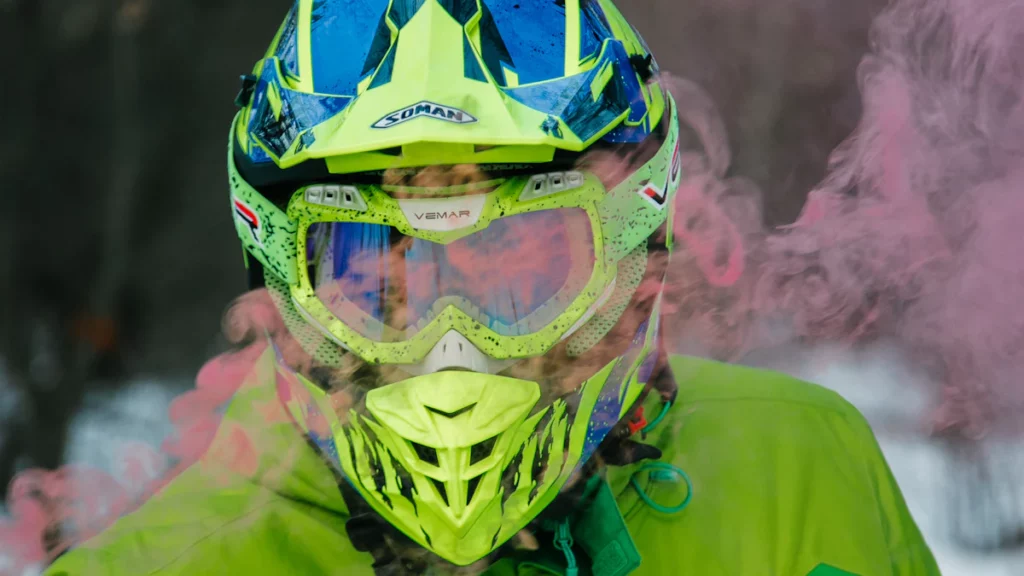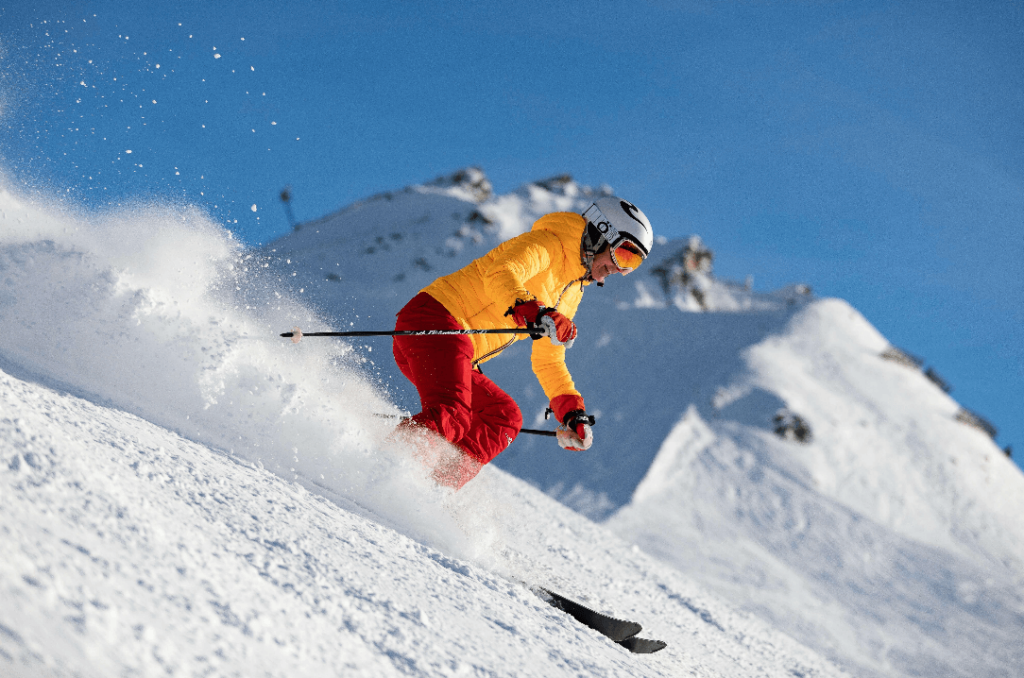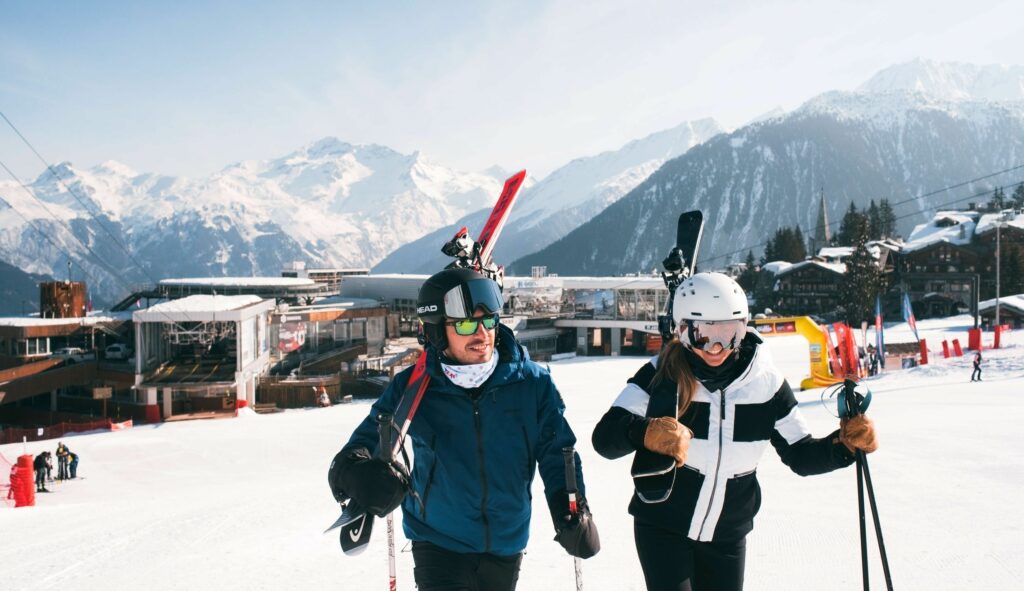When hitting the slopes for a day of skiing or snowboarding, having the right gear is essential for both safety and performance. One crucial piece of equipment that often gets overlooked is the ski goggles. Understanding the concept of Visible Light Transmission (VLT) meaning and its significance in choosing the right pair of ski goggles can greatly enhance your overall experience on the mountain.
In this comprehensive guide, we’ll delve into the what is VLT on ski goggles, explore how it impacts your choice of lenses, and provide insights into matching best VLT for ski goggles with different skiing conditions. So let’s dive in and unravel everything you need to know about VLT on ski goggles!
What is VLT on Ski Goggles?

Visible Light Transmission (VLT) refers to the amount of light that passes through a goggle’s lens. Essentially, it represents the percentage of visible light allowed to reach your eyes, affecting how bright or dark your surroundings appear. This means that a lens with a higher VLT percentage allows more light to pass through, making it ideal for low-light conditions, while a lower VLT percentage indicates a darker lens, suitable for brighter conditions.
Why VLT Matters for Skiers
The significance of VLT becomes evident when considering the diverse lighting conditions encountered while skiing or snowboarding. The ability to select the appropriate lens with the right VLT percentage enhances vision and overall safety on the slopes.
For instance, in bright and sunny conditions, a low VLT rating is most effective as it minimizes the amount of light transmitted through the lens. This not only aids in quick eye adjustment but also reduces brightness on snow, providing better visibility of the terrain. Conversely, in low-light situations such as cloudy days or flat light, a high VLT lens increases visibility contrast, allowing for more confident skiing and riding without feeling limited by lens tint.
Furthermore, having multiple pairs of ski goggles with varying VLT ratings can be advantageous in adjusting to changing light conditions throughout the day. For example, using a pair with a low VLT rating for bright sunlight and another pair with a higher VLT rating for night skiing or other dark conditions ensures optimal vision at all times.
Goggle Lenses VLT Percentages Category
When it comes to selecting the right ski goggles, understanding the Visible Light Transmission (VLT) percentages and their categories is essential for ensuring optimal vision and eye protection on the slopes. Each pair of goggles is equipped with lenses that have a specific light visible range, typically between 0% and 100%, indicating the percentage of visible light that is allowed to pass through.

S0 (80-100% VLT, no or very light tint)
Goggles falling under this category allow the highest amount of visible light to pass through, making them ideal for extremely low-light conditions. These lenses are beneficial for skiing in flat or overcast light when visibility is significantly reduced.
S1 (43-80% VLT)
Lenses in this category offer versatility for varying light conditions. They are suitable for partly cloudy days or situations where there is moderate natural light. The moderate tint helps enhance contrast and depth perception while providing adequate protection from glare.
S2 (18-43% VLT)
This category encompasses lenses that are well-suited for everyday use in a wide range of lighting conditions. They offer moderate to low levels of visible light transmission, making them suitable for both sunny and overcast days.
S3 (8-18% VLT)
Goggles with lenses falling under this category are designed specifically for bright and sunny days. They provide a darker tint compared to S0, 1, and 2, offering superior protection against intense sunlight and glare.
S4 (0-8% VLT, very dark tint)
Lenses in this category are tailored for extremely bright conditions such as high-altitude skiing or snowboarding on exceptionally sunny days. They provide the highest level of sun protection by allowing minimal visible light transmission.
Lens Color Influence on VLT
In addition to the VLT categories, lens color plays a crucial role in determining how much light enters the goggles:
- Rose (pinkish red) and Amber (yellowish orange): These colors perform exceptionally well in flat light conditions by enhancing contrast and allowing skiers to discern contours of the snow even in challenging terrains.
- Blue: Blue-tinted lenses are particularly effective in low-light situations such as foggy or snowy weather. They allow a higher percentage of VLT, improving visibility during adverse weather conditions.
Choosing the Right VLT Category
Selecting ski goggles with an appropriate VLT category depends on the prevailing weather conditions and personal preferences. For example:
- Low Light Conditions: Opt for goggles falling under S0 to S2 with higher VLT percentages ranging from about 60% to 90%. These lenses provide enhanced visibility in flat or overcast lighting scenarios.
- Sunny Days: Choose goggles categorized under S3 or S4 with lower VLT percentages ranging from about 5% to 20%. These darker-tinted lenses offer superior sun protection and reduce glare during bright daylight.
What VLT is Best for All Conditions?

Choosing ski goggles with a versatile VLT range that caters to all lighting conditions can provide adaptability and convenience during skiing or snowboarding activities. Photochromic lenses, which offer a wider range of VLT percentages, are particularly suitable for all-day use as they automatically adjust their tint based on changing light conditions. This adaptive feature ensures consistent visibility and eye protection across varying weather scenarios, making them an ideal choice for skiers seeking versatility in their eyewear.
Moreover, having multiple pairs of ski goggles with different VLT ratings allows skiers to seamlessly transition between lighting conditions without compromising vision quality. By owning goggles with varying VLT percentages, individuals can effortlessly switch between lenses based on the intensity of natural light throughout the day, ensuring optimal visibility regardless of changing weather patterns.
What VLT Is Best for Snow Conditions?
When navigating snowy terrains, selecting ski goggles with an appropriate VLT percentage tailored to snow conditions is essential for maximizing visibility and contrast. Higher VLT ratings are recommended for dull or low-light days when visibility may be compromised by overcast skies or flat light. Goggles with increased VLT percentages ranging from about 60% to 90% enhance visual acuity in such challenging lighting scenarios, allowing skiers to discern terrain features more clearly and navigate safely through snowy landscapes.
Additionally, considering lens material and anti-fog technology is crucial when choosing ski goggles optimized for snow conditions. Anti-fog goggles play a pivotal role in maintaining optimal visibility by preventing condensation buildup on the inner surface of the lens, ensuring consistent light transmission even in cold or humid environments. The integration of venting systems further contributes to managing fogging issues while preserving consistent VLT levels for enhanced visual clarity amidst snowy surroundings.
Is 50% Vlt Good for Night Skiing?
For night skiing or riding under dark lighting conditions, a Visible Light Transmission (VLT) rating of 50% may not provide sufficient visibility due to its relatively darker tint. In extreme low-light situations such as night skiing or riding at dusk, VLT percentages ranging from about 43% to 80% (S1) are recommended to ensure adequate brightness and contrast perception.
- Ski Professionals: “Photochromic lenses offer a wider range of VLT percentages suitable for all-day use.”
- Optometrists: “Higher VLT ratings are recommended for dull or low-light days when navigating snowy terrains.”
Conclusion
In conclusion, understanding the concept of Visible Light Transmission (VLT) and its significance in choosing the right ski goggles is paramount for enhancing the overall skiing or snowboarding experience. By comprehending how VLT percentages influence visibility and eye protection, skiers can make informed decisions when selecting goggles tailored to specific lighting conditions.















